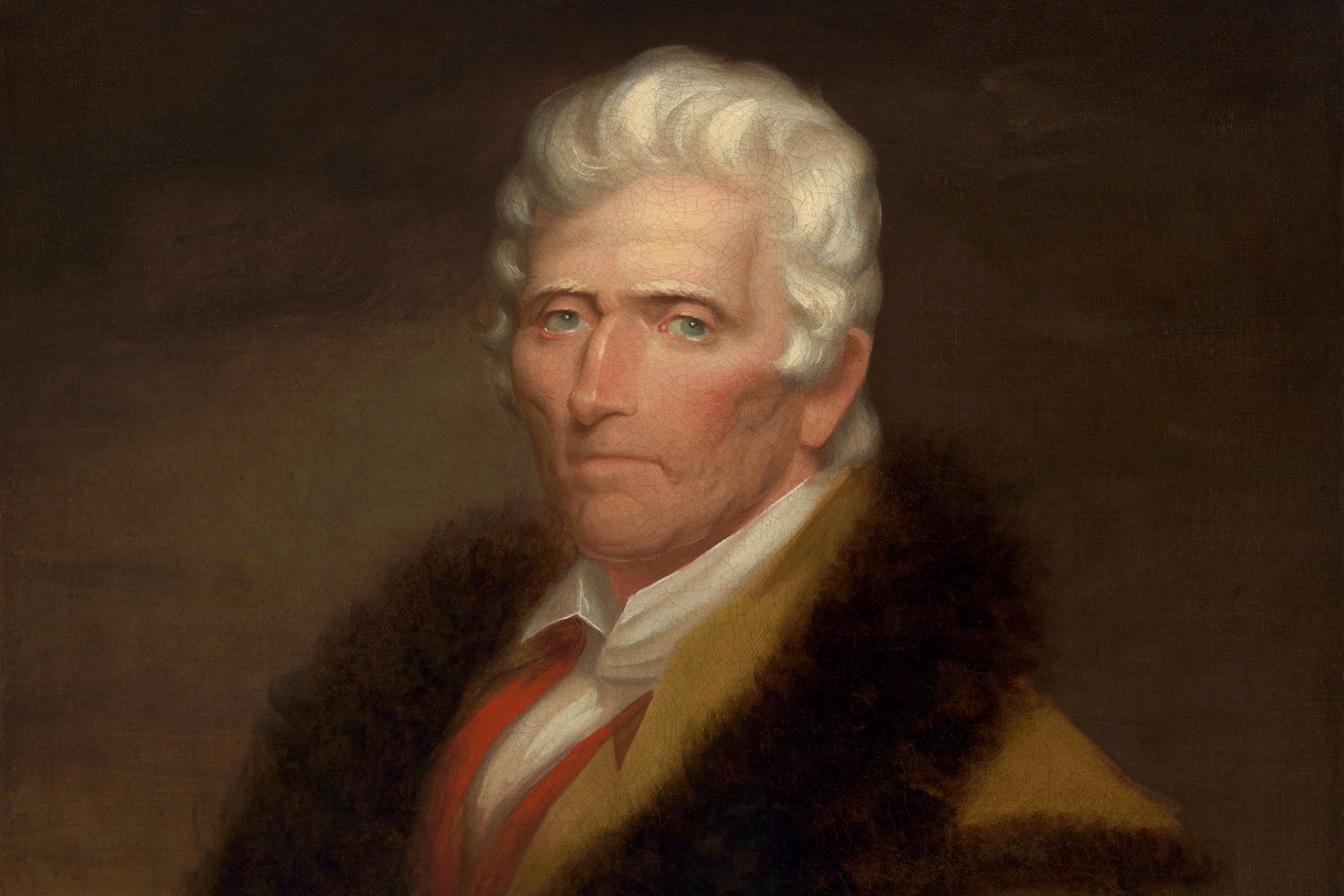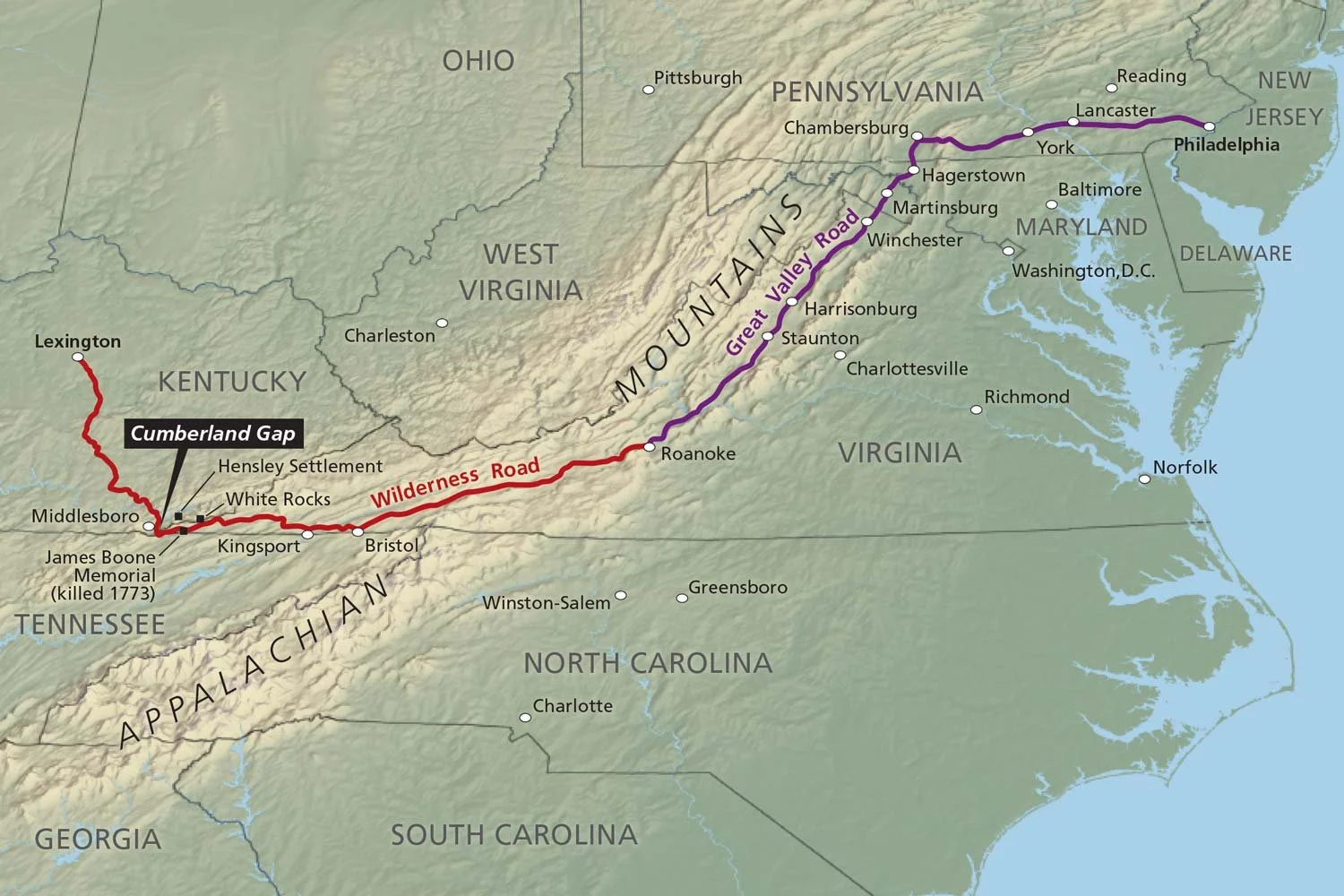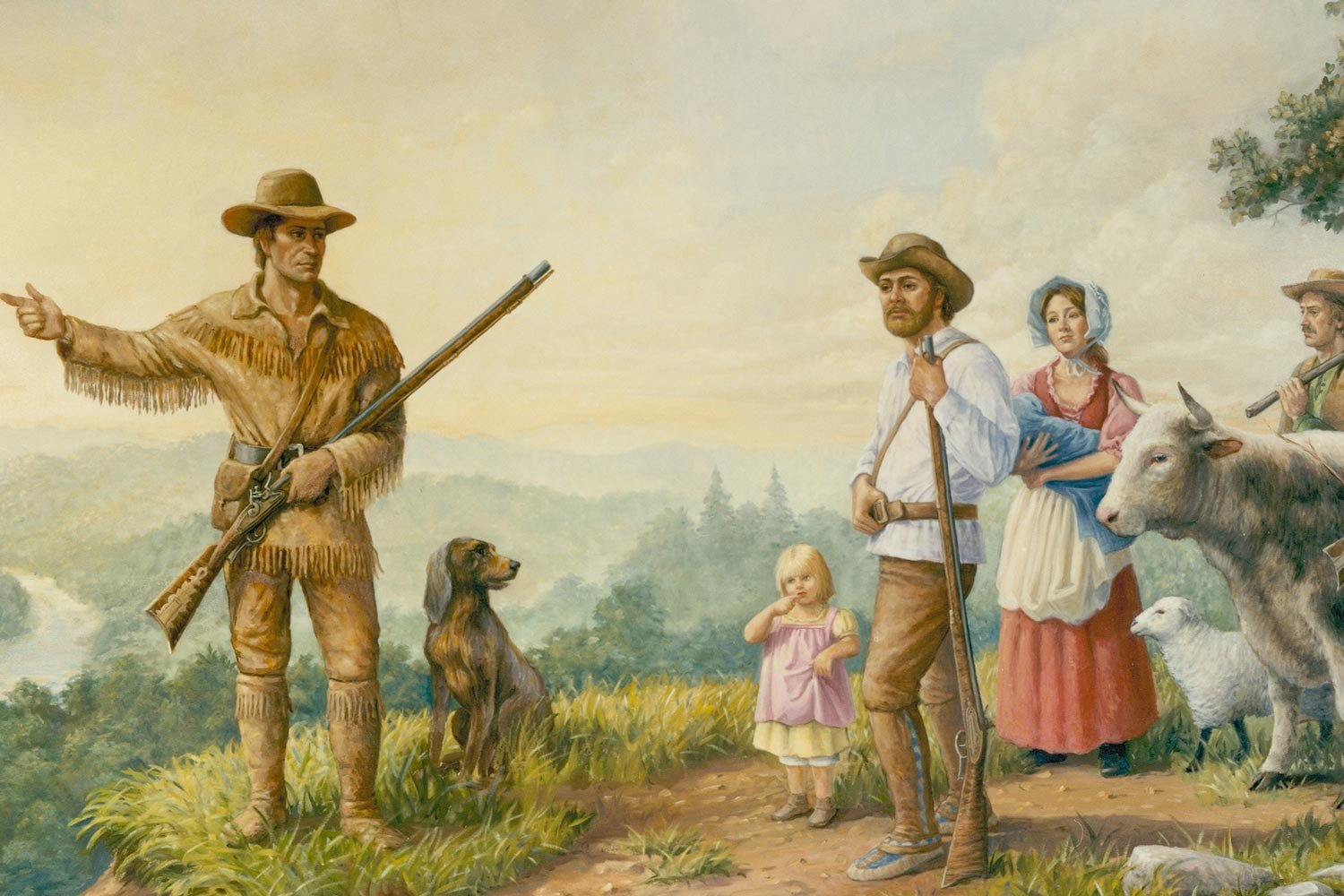The Early Life of Daniel Boone
One of the greatest American explorers from our founding era was Daniel Boone. A legendary woodsman, Boone helped to make America’s dream of westward expansion in the late 1700s a reality.
Boone was born on November 2, 1734, in the Oley Valley in southeastern Pennsylvania. His father, Squire Boone, was a weaver and blacksmith who had emigrated to America from England in 1713. Daniel was the sixth of eleven children and was raised in a Quaker household.
As a teen, Boone was more interested in hunting than schooling and, consequently, received a limited formal education. That said, Daniel was more literate than most of his fellow woodsmen and often took a book or two on his woodland journeys. His favorite works were the Bible and Gulliver’s Travels.
In 1750, Squire Boone moved his family to North Carolina, near present-day Mocksville. When the French and Indian War started in 1754, Daniel joined the North Carolina militia as a teamster and blacksmith. The next year, Boone accompanied the ill-fated Braddock expedition that suffered a terrible defeat at the Battle of the Monongahela, but he escaped unharmed.
Daniel married Rebecca Bryan in 1756, and together they would eventually raise ten children. In the following years, Boone ranged far and wide into the Appalachians, hunting and trapping to provide food and money for his growing family. His reputation as a knowledgeable mountain guide, as well as a superb marksman, grew.
Boone first crossed into Kentucky and glimpsed its incredible beauty in 1767. Two years later, he began an extended hunting trip that lasted for twenty-four months. During this long hunt, Daniel became very familiar with the hills of Kentucky, and the lure of its rich hunting grounds pulled on him.
In 1773, he took Rebecca, his family, and about 50 other pioneers to try and establish the first British settlement in Kentucky. Unfortunately, the party was attacked by a band of Delaware, Shawnee, and Cherokee Indians, and two settlers were killed including James Boone, Daniel’s oldest son. The group was forced to turn back.
This attack was the start of a conflict known as Lord Dunmore’s War, named after the Royal Governor of Virginia, John Murray, 4th Earl of Dunmore. The war ended on October 10, 1774, after the Battle of Point Pleasant. Here, the Virginia militia, which included George Rogers Clark and Daniel Morgan, future heroes of the American Revolution, crushed a large band of Indians under the leadership of Chief Cornstalk.
With the peace came a renewed interest in Kentucky as more people began to look west. Tales of the storied lands just over the mountains spread among the colonists, increasing the demand to find a route through the Appalachians. Richard Henderson, a North Carolina judge, saw the opportunity and formed a land speculation outfit called the Transylvania Company.
Henderson’s hope was to form a new colony, the Transylvania Colony, out of what is now the western two thirds of Kentucky. He purchased an amazing 20,000,000 acres from the Cherokee Indians under the Treaty of Watauga but needed a road to get potential settlers to his holdings. He hired Boone to build this pathway to the west and Boone’s 35-man crew, armed with axes for chopping and guns for protection, started on March 10, 1775.
“The Wilderness Road.” National Park Service.
They blazed a 200-mile trail called Boone’s Trace, later known as The Wilderness Road. Despite an Indian attack that claimed the life of several woodsmen and grueling work, Boone’s hardy band completed their work in about a month.
This forest path proceeded through the dense woodlands of Tennessee, over the Cumberland Gap, and terminated at the sparkling waters of the Kentucky River. Here, Boone established Boonesborough and, in September of that year, finally brought his family to Kentucky.
The Wilderness Road would be the pathway over the next 35 years for more than 300,000 Americans heading to the fertile lands west of the Appalachians. In 1792, these settlers would lead to Kentucky being admitted as the fifteenth state in the Union.
When Daniel Boone completed the Wilderness Road, he was 40 years old and still a relatively unknown frontiersman outside of western North Carolina, eastern Tennessee, and Kentucky. That would change in the years ahead.
Next week, we will talk about Daniel Boone’s life in Kentucky, his move west to Missouri, and how he became an American legend. Until then, may your motto be “Ducit Amor Patriae”, Love of country leads me.





Soon after the American Revolution began in 1775, Daniel Boone joined the Virginia militia of Kentucky County (later Fayette County) and was named a captain due to his leadership ability and knowledge of the area. Over the next several years, Boone would participate in numerous engagements.